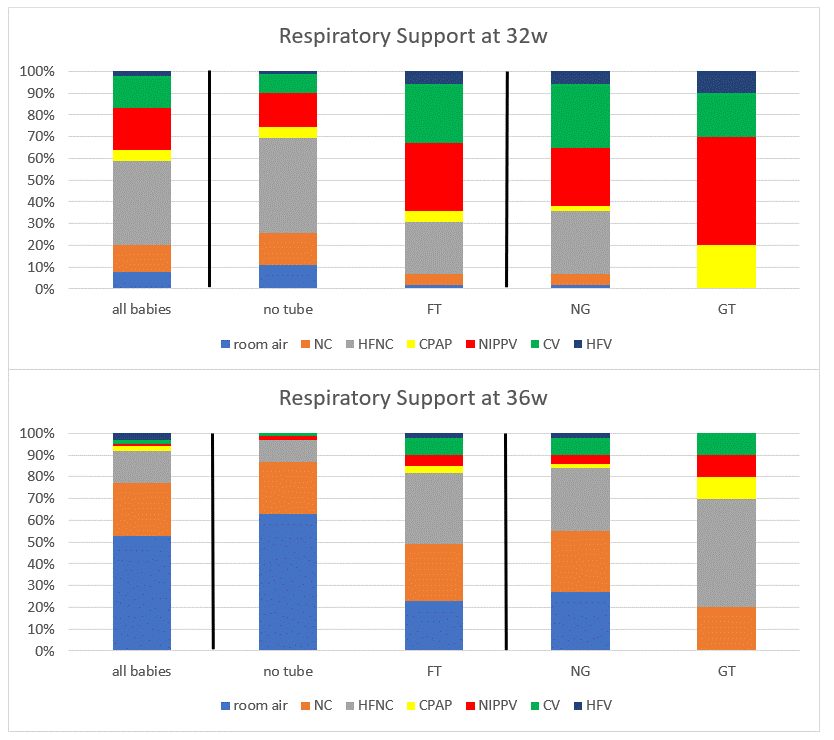Neonatal Fetal Nutrition & Metabolism
Category: Abstract Submission
Neonatal Fetal Nutrition & Metabolism II
292 - Risk factors for a home gastrostomy tube versus nasogastric tube at NICU discharge
Friday, April 22, 2022
6:15 PM - 8:45 PM US MT
Poster Number: 292
Publication Number: 292.120
Publication Number: 292.120
Meghan Brunswick, Golisano Children's Hospital at The University of Rochester Medical Center, Rochester, NY, United States; Mathew J. Gregoski, Medical University of South Carolina College of Medicine, Charleston, SC, United States; Emily A. Schiller, NYU - - New York, NY, Mineola, NY, United States; Julie E. Riccio, University of Rochester School of Medicine and Dentistry, Pittsford, NY, United States; Rita Dadiz, University of Rochester School of Medicine and Dentistry, Rochester, NY, United States; Rita M. Ryan, Case Western Reserve University, Cleveland, OH, United States

Rita Dadiz, DO (she/her/hers)
Professor of Pediatrics
University of Rochester Medical Center
Rochester, New York, United States
Presenting Author(s)
Background: Extreme prematurity and associated medical complications can make oral feedings very challenging in the neonatal population. For infants who cannot achieve full oral feeding, a feeding tube (FT) may facilitate discharge home when they are medically ready. There are no guidelines for determining the need to place a nasogastric tube (NGT) or gastrostomy tube (GT) for home feeds.
Objective: Compare the clinical characteristics of premature infants born at < 30 weeks’ (w) gestation who were discharged from the University of Rochester Medical Center’s (URMC) NICU with an NGT vs. GT.
Design/Methods: We conducted a retrospective chart review of infants < 30w gestation admitted to the NICU during 2015-2017. Clinical characteristics included gestational age; birth weight; presence and type of treatment for patent ductus arteriosus; necrotizing enterocolitis (NEC); intraventricular hemorrhage (IVH); respiratory support at 32 and 36w postmenstrual age (PMA); PMA at first oral feeding attempt; oral feeding volumes from 34 to 50w PMA and the first 50 days after oral feeding initiation; and PMA at discharge. Continuous data are presented as median and tested by Wilcoxon rank sum test if not normally distributed and as mean and tested by t-test if normally distributed; categorial data are presented as n (%) and tested by chi-square or Fisher’s exact test.
Results: There were 252 infants who met inclusion criteria. Of the 62 (25%) infants who had a FT placed to enable discharge home, 52 (21%) had an NGT, and 10 (4%) had a GT. Significant differences between infants with and without a FT at discharge were noted on univariate analysis (Table 1), including gestational age, birth weight, PDA ligation, high frequency ventilator use, total days of ventilator use, total days on positive pressure respiratory support, PMA at first oral attempt, and PMA at discharge. Almost all of these factors were significantly different between GT vs. NGT (Table 1). We also collected respiratory support status at 32 and 36w PMA (Figure 1). In a cohort of these infants born in 2015-16 (n=162), oral feeding advancement was significantly slower in the FT vs. no FT group; this was also different in the GT vs. NGT infants.Conclusion(s): This study revealed several clinical characteristics associated with premature infants who were discharged with a FT. Earlier identification of infants at risk for the inability to achieve full oral feeds at discharge may facilitate earlier discharge. A home NGT was associated with earlier discharge than GT.
Table 1.gif) Clinical Characteristics
Clinical Characteristics
Figure 1
Objective: Compare the clinical characteristics of premature infants born at < 30 weeks’ (w) gestation who were discharged from the University of Rochester Medical Center’s (URMC) NICU with an NGT vs. GT.
Design/Methods: We conducted a retrospective chart review of infants < 30w gestation admitted to the NICU during 2015-2017. Clinical characteristics included gestational age; birth weight; presence and type of treatment for patent ductus arteriosus; necrotizing enterocolitis (NEC); intraventricular hemorrhage (IVH); respiratory support at 32 and 36w postmenstrual age (PMA); PMA at first oral feeding attempt; oral feeding volumes from 34 to 50w PMA and the first 50 days after oral feeding initiation; and PMA at discharge. Continuous data are presented as median and tested by Wilcoxon rank sum test if not normally distributed and as mean and tested by t-test if normally distributed; categorial data are presented as n (%) and tested by chi-square or Fisher’s exact test.
Results: There were 252 infants who met inclusion criteria. Of the 62 (25%) infants who had a FT placed to enable discharge home, 52 (21%) had an NGT, and 10 (4%) had a GT. Significant differences between infants with and without a FT at discharge were noted on univariate analysis (Table 1), including gestational age, birth weight, PDA ligation, high frequency ventilator use, total days of ventilator use, total days on positive pressure respiratory support, PMA at first oral attempt, and PMA at discharge. Almost all of these factors were significantly different between GT vs. NGT (Table 1). We also collected respiratory support status at 32 and 36w PMA (Figure 1). In a cohort of these infants born in 2015-16 (n=162), oral feeding advancement was significantly slower in the FT vs. no FT group; this was also different in the GT vs. NGT infants.Conclusion(s): This study revealed several clinical characteristics associated with premature infants who were discharged with a FT. Earlier identification of infants at risk for the inability to achieve full oral feeds at discharge may facilitate earlier discharge. A home NGT was associated with earlier discharge than GT.
Table 1
.gif) Clinical Characteristics
Clinical CharacteristicsFigure 1

